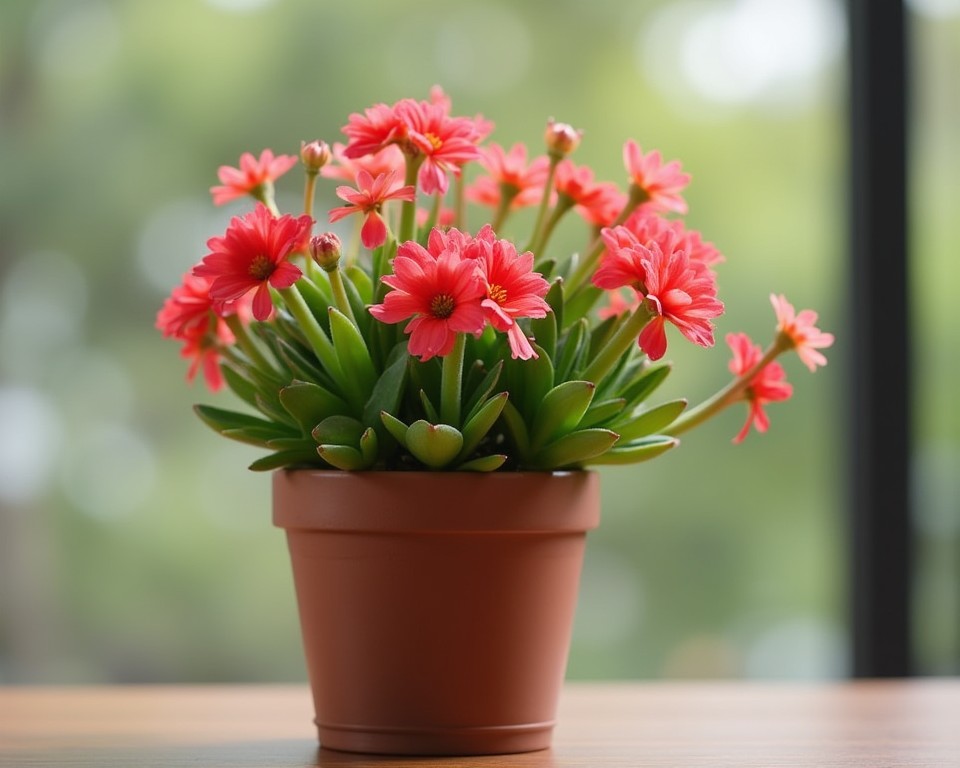
Have you ever wondered if the beautiful Kalanchoe plant you picked up at the store might be dangerous to your curious cat? If you’re like me, you might’ve assumed it was safe because it looks harmless enough, right? Well, unfortunately, Kalanchoe is super toxic to cats.
While it adds a touch of green to your home, it can cause some pretty serious issues for your furry friend, including vomiting, diarrhoea, and even heart problems. The truth is, most of the Kalanchoe plants you’ll find in stores can pose a risk to your pets.
In this article
What Exactly Happens When a Cat Eats Kalanchoe?
If your cat nibbles on a Kalanchoe plant, they can experience gastrointestinal issues like stomach pain, vomiting, and diarrhea. In some cases, it may lead to dehydration because of the fluid loss from all that vomiting and diarrhea. Dehydration can sneak up fast, especially in smaller cats or those with health issues. One of the scariest risks? Arrhythmia, which is an abnormal heart rhythm that can lead to bigger problems if left untreated.
Even if it’s just a small nibble, it’s important to watch for symptoms. You never know how sensitive your cat might be to the toxins. Cats, like people, react differently to certain plants, but why take the chance?
Are All Kalanchoe Plants Equally Toxic?
Here’s the thing—while all varieties of Kalanchoe are considered toxic to cats, the severity of the toxicity can vary depending on the species and how much your cat eats. Some people believe that the Kalanchoe plants sold in big box stores might be less harmful. Maybe you’ve heard this too? I’ve seen a lot of talk about it, but there isn’t any solid evidence to back that up. So, I wouldn’t gamble on it.
If your cat is the type to sample anything green in your house, you’re probably better off skipping this plant altogether. It’s just not worth the risk when there are so many other non-toxic plants out there. Even if your particular plant isn’t the most toxic variety, you still don’t want to spend your day rushing to the vet over a little bite of something you could’ve avoided bringing into your home.
Symptoms to Watch For
Here’s what to keep an eye on if you think your cat got into your Kalanchoe:
- Vomiting: This can start pretty quickly after ingestion.
- Diarrhea: Your cat may also experience loose stools, which can lead to dehydration.
- Lethargy: Your cat might seem unusually tired or weak.
- Drooling: Excessive salivation can be a sign of poisoning.
- Difficulty breathing or irregular heartbeat (arrhythmia): This is where things get more serious, and it’s time to call the vet ASAP.
One thing I’ve learned from owning cats is they often hide when they’re not feeling well. So, if you suspect your cat has chewed on a Kalanchoe, don’t wait around to see if symptoms appear. Contact your vet right away. Better safe than sorry!
What To Do if Your Cat Eats Kalanchoe
I know that panicked feeling when you catch your cat nibbling on something they shouldn’t. If you think they’ve eaten part of a Kalanchoe plant, here’s what to do immediately:
- Remove the plant from the area so your cat can’t eat more.
- Check for symptoms like vomiting, diarrhea, or lethargy.
- Call your vet and explain what happened. They’ll advise you on the next steps based on your cat’s size, the amount eaten, and the severity of the symptoms.
If your vet isn’t available, get in touch with an emergency animal clinic or a pet poison hotline. It’s always better to act fast in these situations.
Safe Alternatives to Kalanchoe
When you have a cat, safety comes first. Luckily, there are some beautiful, non-toxic alternatives to Kalanchoe that will give you peace of mind:
These are all safe for cats, and they look just as good on your windowsill!
Frequently asked questions
How much Kalanchoe does it take to make a cat sick?
Even a small amount can cause stomach issues in cats, so it’s best to assume that any ingestion is serious enough to warrant a call to the vet.
Are the Kalanchoe plants at big box stores less toxic?
There’s some talk that they might be, but there’s no clear evidence. It’s safer to assume that all Kalanchoe plants are toxic to cats.
How quickly will symptoms appear?
Symptoms like vomiting or diarrhea can appear within a few hours after your cat has eaten the plant.
Can Kalanchoe poisoning be treated at home?
It’s important to seek professional veterinary advice right away. While keeping your cat hydrated is helpful, you don’t want to take any chances with something as serious as potential heart problems.
When it comes to Kalanchoe, the risk is just too high for our feline friends. If you’re unsure about a plant being toxic to cats, always research it before bringing it home. After all, there are plenty of safe and beautiful plants out there that won’t give you that extra worry!







